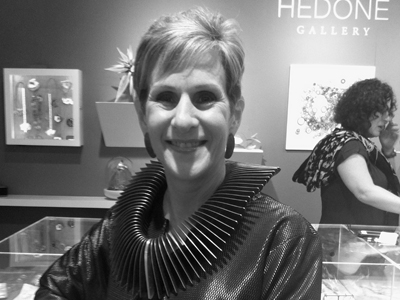
AJF’s Young Artist Award acknowledges promise, innovation, and individuality, advancing the careers of rising artists. The competition was open to makers of wearable art age 35 and under who are not currently enrolled in a professional training program. Judging was based on originality, depth of concept, and quality of craftsmanship. This year’s jurors were curator Barbara Paris Gifford, historian Toni Greenbaum, and Chinese artist Bifei Cao, the winner of the 2018 Artist Award. The unrestricted cash prize of US$7,500 awarded to the winner was generously funded by the collectors and AJF members Karen and Michael Rotenberg.
This is the second of five interviews with the honorees. (Read the first interview, with winner MJ Tyson, here.)
Bonnie Levine: Congratulations on being one of the five finalists of the 2020 Artist Award competition—that’s quite an accomplishment! Please introduce yourself to our readers. How did you become interested in jewelry, and what inspires your work?
Junmin Bae: I have a great interest in collecting old objects associated with my memories or rare items. I find that the act of contemplating on and observing objects provides me with mental comfort. I believe that the aesthetic experience of meditating on the aesthetic characteristics or implications inside of the objects instills a special relationship between me and those objects. What I gather from such an activity creates entirely personal and secret memories that I would not get from some other objects. This has the identical meaning to my current subject matter, the microscopic world, since they have “observation” in common. I cite psychologist Alexandra Horowitz’s quote, “We see, but we do not see,” to shape a reason behind the observation. An act of seeing also means recognizing multiple aspects by being conscious about an inner world that goes beyond visual activities. And she unravels the “observation” as an enthusiastic attitude and melts it into the artwork.
I take organic forms, repetitions and clusters, structural rhythmicity, and color contrast as visual elements, and materialize them into aesthetic objects that show micro worlds to stimulate imagination. Many structural elements and natural orders, from fundamental particles that make up all matter to the universe, cross between dimensions of existence, and wearing the jewelry opens up this large and mystical world to us.
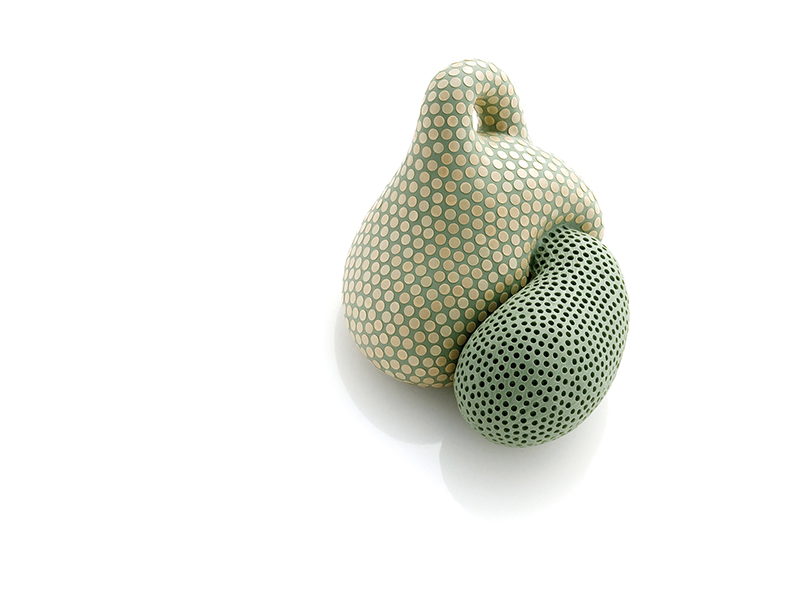
Tell us about the work you applied with.
Junmin Bae: I intend to constitute regular patterns, which can be observed in the process of cell division or the eyes of insects among enormous images in the microscopic world, in a visual manner. I also focus on characteristics such as organic shapes, the co-existence of beauty and grotesqueness that appear in the movements of proliferation and extinction, and the contrast of positive and negative feelings that can be sensed from the modifications of cells or tumors. Thus, I aim to express such shapes through the process of attaching and piercing small dots on the surface of accessories. The organized dots or freely scattered dots are not contained in space; they fill out and create the space by themselves. This is the passage of time I encounter without any disturbance, and at the same time my small universe.
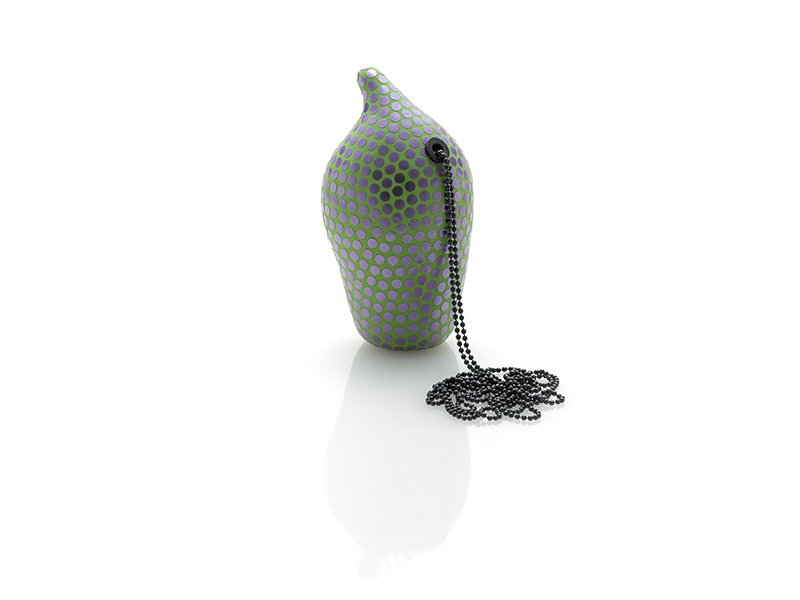
What excites you about the art jewelry field?
Junmin Bae: I think jewelry is no different from objects. In addition, its biggest advantage is that we can carry an element of an ornament on our bodies. This is because in the moment a wearer exists as an observer while at the same time the relationship with the objects (jewelry) becomes closer and much more special.

Any frustrations that you see or have experienced?
Junmin Bae: I think it is perhaps the language [barrier]. There are a number of jewelry artists in Korea and I have in-depth conversations with them. Such conversations inspire me greatly and provide me with positive stimulation. Various fairs and exhibitions for jewelry provide great opportunities to exchange with artists whose main stages are not Korea, but I am full of regret that a lack of language skills always prevents us from having deeper discussion about our works.
Secondly, there is also the narrow jewelry market. This sometimes frustrates me. I believe that the treatment of jewelry artists and the environment for them should be improved. Surely, various art support projects have been expanded and the opportunities to display such works are on the increase, which is quite inspiring for artists like me.
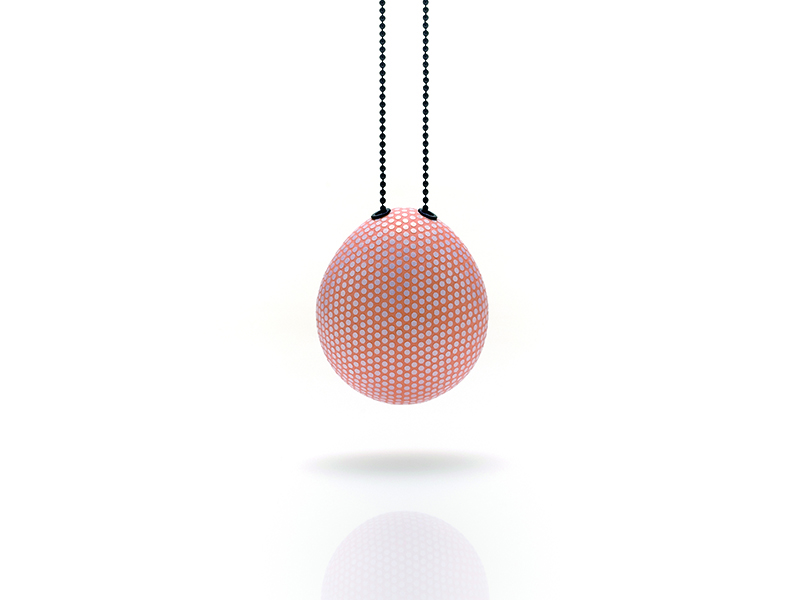
Where do you think the art jewelry field is going? Are there new and exciting trends that you see?
Junmin Bae: Contemporary jewelry is one of the greatest art media to express individual taste. Still, I hope that this area could be acknowledged as an independent art genre. I wish that everyone could approach and consume jewelry and communicate about it in the same way that people discuss artworks. I would like to tell them, “Art jewelry is not difficult!”
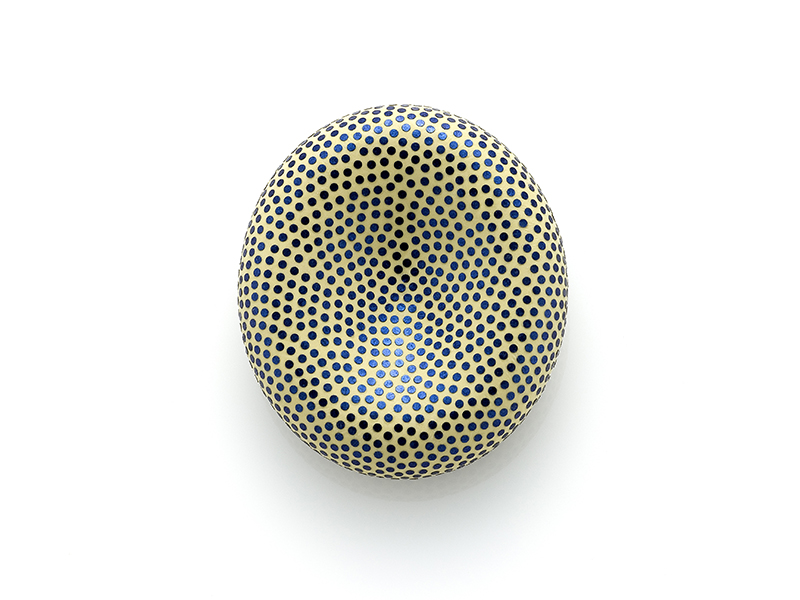
If you could write a master plan for your practice, where would you like to be five years from now?
Junmin Bae: I have ambitions to work more actively. So far I have presented my work by participating in group exhibitions or exhibitions planned by curators. Some time ago, when I was preparing for my first solo exhibition in Korea, I became interested in curating exhibitions. I am now ruminating on and studying exhibition methods that are intrinsically different from the existing ones to date. I want to achieve outcomes as a result of my thoughts.
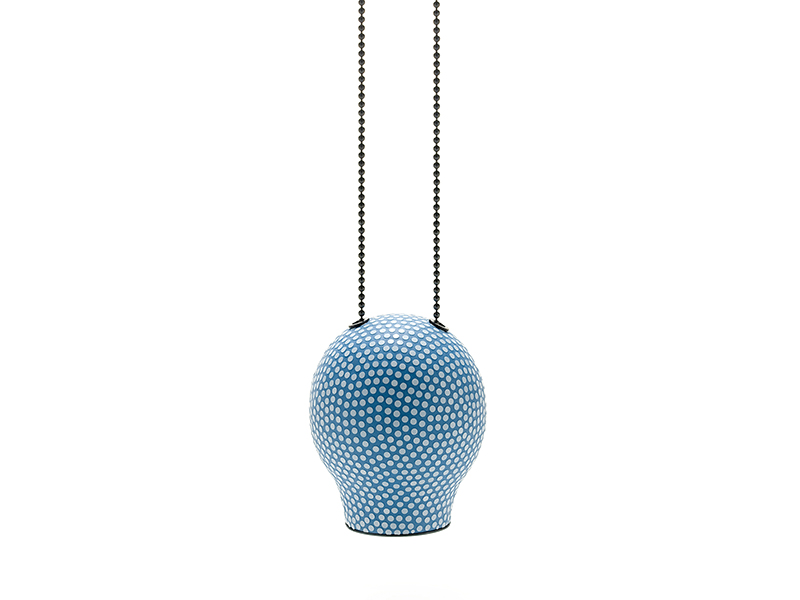
What does being a finalist mean for you? Do you think it will influence you going forward?
Junmin Bae: First, I am very grateful and feel honored to be selected as one of the finalists. Working on what I favor the most and creating something through sheer enjoyment satisfies me, and yet, above all, I am most pleased that I have been given the opportunity to inspire many other people through my works in a completely different manner.
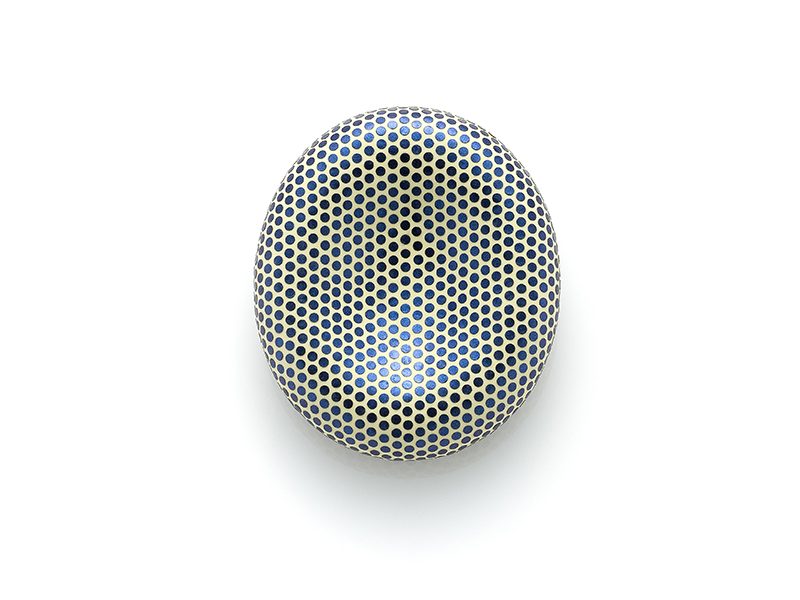
Shapes that would feel nice in the hand and on the body; sophisticated color sense—can’t help but feel happy while looking at this work. —Barbara Gifford, Young Artist Award juror
Sensuously sculptural, these haptic jewels beg to be fondled, as well as worn. —Toni Greenbaum, Young Artist Award juror
Each form is unpredictably organic and allows audiences to wonder [about] its materials and references while following [the] soft edge in each piece. Geometric dots have been arranged on each surface, keeping a systematic repetition. Each piece is well made, too. —Bifei Cao, Young Artist Award juror
